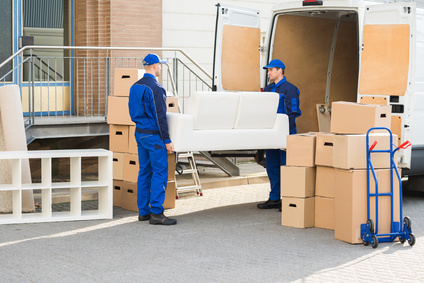Moving Furniture Smoothly and Safely

As exciting as it may be, moving is a huge commitment, and one that frequently takes a lot of time and energy. Figuring out how to tackle the time line, the organizational hurdles, and the task of getting all of your possessions from one place to another can be extremely overwhelming, especially when it comes to caring for your furniture.
Moving furniture is a big process, and it doesn’t always go smoothly. From damage to furniture or walls to back aches and knee pain, there’s a lot of liability that can come with the process of carefully packing your valuable possessions, loading them into a truck, and moving them into a completely new property. There’s no foolproof way to move, but following these tips can help you get your furniture safely from Point A to Point B.

Create a Game Plan
Everything important in life deserves proper preparation, moving included. Protecting your home and your furniture means making arrangements in advance, whether you have a step by step plan in place or simply some general guidelines to follow.
Before the moving truck arrives, consider how you want to load up your life. What will go first, in the back of the truck, and what items do you need right away? Some movers prefer loading boxes at the very back of the truck so the big things are easier to access, while some prefer to keep furniture in the back so essentials are within reach. Consider organizing your furniture by room to make the unloading process easy, and make sure the weight of your possessions is balanced across the length of the truck.
Learn How to Carry
Mastering the art of carrying furniture can be a key element in a successful move. When lifting, always do so with your legs, not your back. The muscles in your legs can support the weight you need to bear in a stable manner, preventing back strains and sprains.
When moving tall furniture pieces that require more than one set of hands, carry items high and low. Tip each item, like a tall dresser or bookshelf, and have one person carry the bottom and one the top. This will keep the weight centered and the item under control, facilitating the moving process. Carrying items this way also makes getting up and down stairs easier, as furniture is already held at an angle.

Stay Protected
It may seem unnecessary and time-consuming, but taking extra safety precautions can make a world of difference. By protecting what you own, including tall or awkward sized items, wooden furniture, and fabric chairs and couches, you’re much more likely to make the move without significant property damage.
Before loading the truck, wrap chairs and couches in plastic to prevent against spills and tears. If you are moving items like dressers, tables, and bookcases, wrap corners in blankets and plastic to prevent scratches on your walls or marks on the wood. Fragile items can be wrapped in blankets and secured. By taking these extra steps, you can minimize the risk of damage, both to your furniture and the walls and door frames in your home.
What Goes Where
Even if you’re moving from a smaller home to a bigger home, there may not be room to take all of your furniture with you. Instead of stashing unneeded furniture items in the basement or the attic, consider an off-site self-storage unit to make the process a little easier. Even if you don’t anticipate a need in the near future, old furniture items can make a great stand-in for a first apartment, especially for young adult children.
Prior to loading the truck, plan which possessions will end up in the new house, and which ones are going to storage. Pack your truck accordingly; if you will be dropping off furniture to your storage unit first, make sure these items are at the very front of the truck. If it’s your last stop, stow them in the back.

The moving process can be equal parts exciting and stressful, but with the right preparation, it’s possible to make any move a success. By understanding what it takes to move furniture without harming yourself or your possessions, it’s easier than ever to ensure an anxiety-free venture from start to finish.